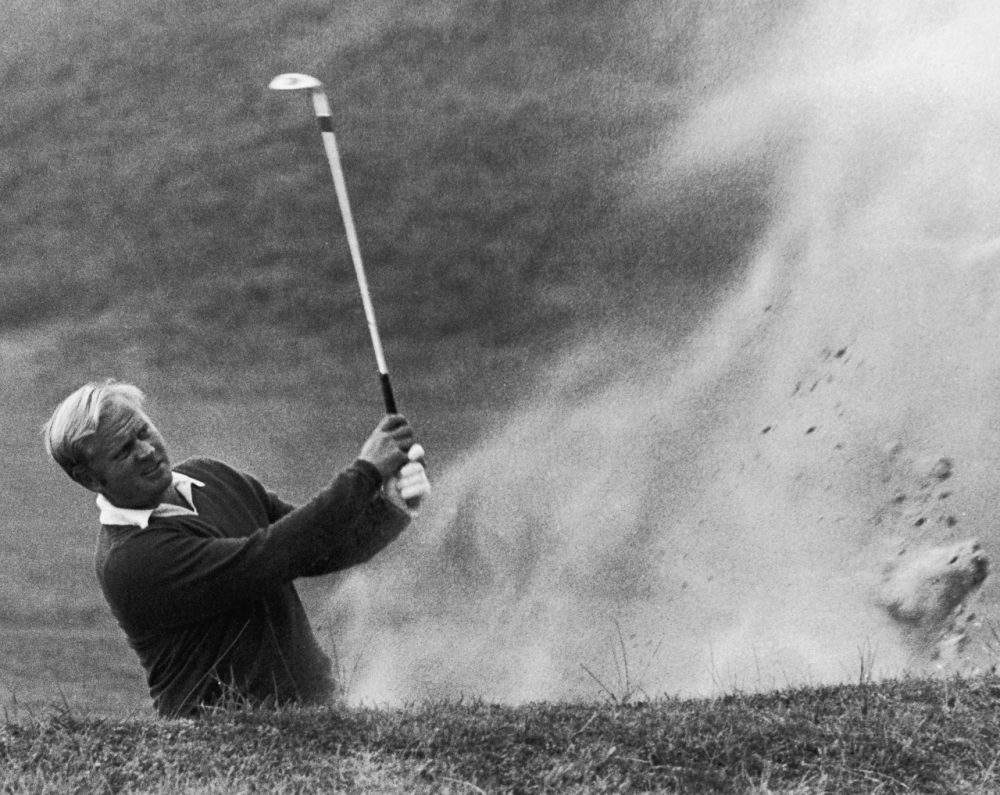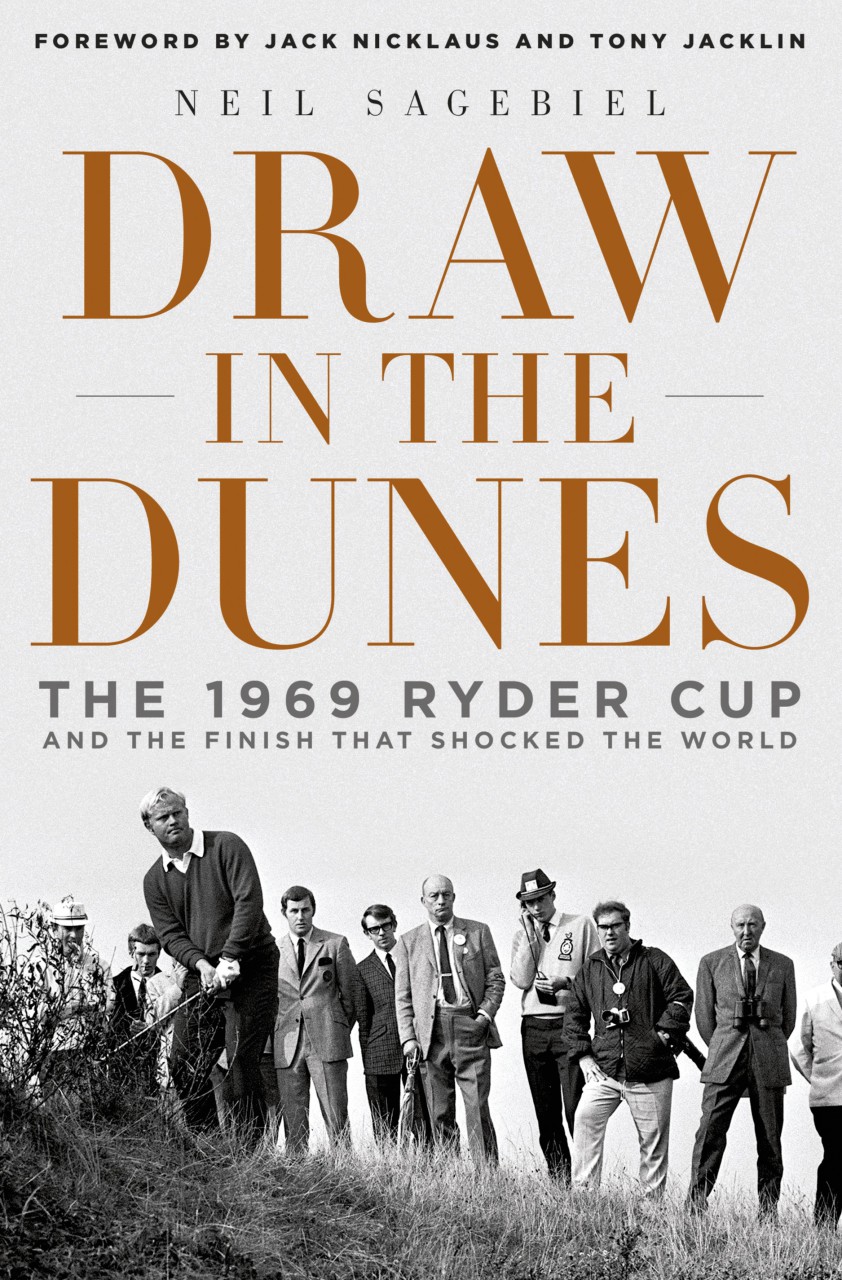Advertisement
'Draw In The Dunes' Details Ryder Cup's First Tie

The 2014 Ryder Cup is under way at Gleneagles in Scotland. The biennial competition pits golfers from the U.S. against their European counterparts. The Ryder Cup is one of golf's signature events and has provided fans with various unlikely shots and improbable comebacks.
Neil Sagebiel would argue that no edition of the competition has been more dramatic than the 1969 Ryder Cup, the first to end in a tie. His new book is titled Draw in the Dunes: The 1969 Ryder Cup and the Finish that Shocked the World.
Highlights from Bill's interview with Neil Sagebiel
 BL: Let's provide some background for the competition you cover in the book. You suggest that in the years previous to 1969, there was a real possibility that the Ryder Cup might cease to be. Why was that?
BL: Let's provide some background for the competition you cover in the book. You suggest that in the years previous to 1969, there was a real possibility that the Ryder Cup might cease to be. Why was that?
NS: Well, it had all the great elements it has today. But coming into the 1969 Ryder Cup America had won 14 of 17 of these Ryder Cups. The British were very much interested in it still, but on this side of the pond it was becoming somewhat irrelevant and it was probably seen more as an exhibition.
BL: The Ryder Cup is supposed to be all about good sportsmanship. It's not supposed to be a win-at-all-costs, cutthroat exercise. But the 1969 U.S. Team was captained by Sam Snead. What was his impact on the atmosphere of the event?
NS: Well, Sam was a real staunch competitor. This was his eighth appearance, both as a player and a captain. And he wasn't the kind of player to concede anything in a match. You played to win, and I think that mindset was the way he approached the competition, which sets up an interesting dynamic when we see how this all ended.
BL: The key moment came after Jack Nicklaus had successfully putted out on the eighteenth hole. Take us through the sequence of events that began with his putt and ended with a gesture that took many of the players and fans by surprise.
NS: Both players hit their second shots on the green. It was a par-5 hole, downwind, so they were putting for eagle, and they both conceivably had putts that could win the Ryder Cup. Tony Jacklin came up short, and he marked and waited for Jack Nicklaus. And Jack, who took a long time on the greens, looked over his putt and ran it four or five feet by, [the first] was about a 20-foot putt. But he concentrated on that [second] putt and he was able to get it into the hole — a really big pressure putt.
BL: For his four.
NS: For his birdie, exactly. And he reaches down and instead of getting his ball out of the hole, he picks up Tony Jacklin's marker. He extends his hand and concedes the putt and they have some nice words on that final green, and then they walk off the green arm-in-arm. And it all ends in a tie — the first tie in the history of the Ryder Cup.
BL: There's only been one other Ryder Cup tie — that happened in 1989. So the result about which you write is no longer singular in that respect. Why has Nicklaus's concession on the eighteenth green come to assume such significance?
NS: I think it was the circumstances. That really was the starting point, for me, in tackling this as a book topic. Because this moment is iconic in golf and sports, and I wondered, "Why? Why could a two-foot putt conceded in a match matter so much?" I think it had something to do with the fact that it was Jack Nicklaus who conceded the putt, but I also think it was where the matches were at that point. It needed some life breathed into it. And I think those circumstances, and all the drama and excitement, we saw what the essence of the Ryder Cup could be. And we saw in 1969 the great potential for it. And I think that helped propel it forward into this modern era. And many of these players on these two teams have been a part of the modern Ryder Cup. 1969, in my estimation, was a very pivotal year.
Bill's Thoughts on Draw In The Dunes
A baseball player who short-hops a ball in the outfield and gets the "out" call is not going to stop the game and tell the umpire he should reverse himself.
[sidebar title="An Excerpt From 'Draw In The Dunes'" width="630" align="right"]Read an excerpt from Neil Sagebiel's Draw In The Dunes.[/sidebar]A football player who can see that the referee has given his team an extra half-yard with a bad spot is not likely to pull the ball back 18 inches and say, "No, we'll start from here."
Golfers are different. They call penalties on themselves. Sometimes they help their opponents look for shots they've hit into the woods. They concede putts, meaning they don't always require their opponents to knock the ball into the cup.
Jack Nicklaus conceded a putt to Tony Jacklin at the end of the 1969 Ryder Cup competition, which ended in a tie. The result almost certainly would have been the same if Jacklin had putted out. His ball was only a couple of feet from the hole. But by conceding the putt, Nicklaus invited golfers and golf fans to take a side on an intriguing issue:
Advertisement
Should every match be played to its conclusion? Or does a gesture of sportsmanship have a place, even in - perhaps especially in - a competition of consequence?
In Draw in the Dunes, Neil Sagebiel offers readers the complete story of what led up to Nicklaus' gesture and considerable insight into its aftermath, including the development of a friendship between Nicklaus and Jacklin that eventually led to the creation of the Concession Golf Club in Bradenton, Fla. — perhaps the only institution anywhere inspired by a "gimmee."
This segment aired on September 27, 2014.
